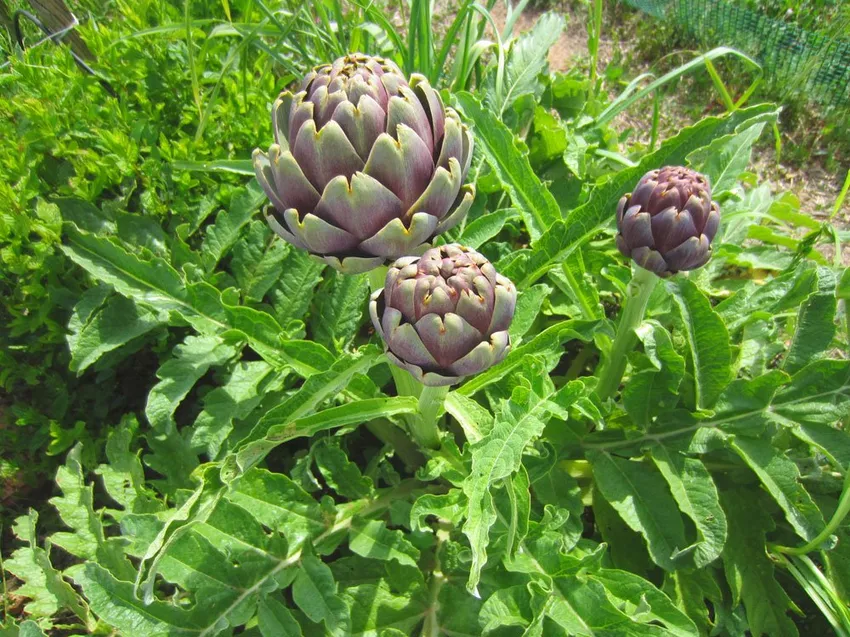Artichokes are not difficult to grow. It only gets complicated when they are affected by diseases and pests. But care errors can also damage the plants.

The artichoke is a remarkable plant: attractive and delightfully flowering, edible and extremely tasty. The vegetable plant is largely resistant to diseases. Pests make her but to create. Mainly aphids, black bean aphids, snails and voles. But care mistakes can also lead to your artichokes not doing so well.
Why doesn't the artichoke thrive?
Care mistakes
❖ too little sun:
What at first glance looks like a plant disease is often just a care mistake. The artichoke grows stunted or gets yellow leaves if it gets too little sun. In order for the artichoke to develop optimally, look for a warm and sheltered place for it. A location in front of a south-facing house wall is well suited.
❖ too little water/waterlogging:
You also need to know that the artichoke needs a lot of water during the growth phase. In summer, the plant can also cope with dry periods, but these must not last too long. It is therefore best to water the artichoke regularly. You can use tap water because the plant is not sensitive to lime. So that the water does not accumulate and the substrate has a storage effect and remains moist at the same time, it is best to use nutrient-rich compost-based soil mixed with a little sand and gravel when planting. With artichokes in a tub, drainage and a drainage hole are also essential. Although the plant loves moisture, it must not become waterlogged.
❖ not enough nutrients:
To ensure that the artichoke is not supplied with too few nutrients, it is a good idea to prepare the soil for the following spring in autumn: To do this, dig up the soil thoroughly and enrich it with manure or compost. Then the nutrients can be distributed well in the soil.
The artichoke is a heavy feeder and needs fertilizer regularly. An organic one is idealFertilizer that you use once or twice a month from spring through fall. Liquid vegetable fertilizer, stable manure, compost, plant manure or pond water are suitable for this. If flowering fails, the plant either needs more fertilizer or is too old. After three to five years, the plant is used up. Put new plants in a different place or change the soil as much as possible.
Frost Damage
The artichoke is perennial and hardy, but still needs good frost protection. To do this, cut back the above-ground shoots to a few centimeters in autumn. That's the only cut you need to make, by the way. Then cover the artichoke. It is best to use compost, leaves, straw, brushwood or stable manure. You can also mix the materials and spread them up to 30 centimeters high on the plant.
In the spring you have to remove the winter protection again. A few parts are allowed to remain, which then serve as the first fertilizer. Artichokes in tubs should overwinter in a frost-free, dark and cool room. Reading tip: Overwintering artichokes: How to get your plants through the cold season
Pest infestation
❖ Aphid and Black Bean Aphid:
Aphids sit on and under the leaves and on the stems. Eaten, limp leaves are a sure sign of aphids. The black bean aphid is very aggressive and also eats the leaves. It also leaves black trails. Furthermore, it tends to spread massively, so that veritable colonies form on the plant. To remove the parasites, shower the plant thoroughly with the hose. Spraying with nettle manure (recipe here) or garlic stock (recipe here) also helps. Ladybugs, lacewings and parasitic wasps are also highly effective as natural enemies. Chemicals are only suitable if you do not want to eat the flowers.
❖ Snails:
There are various measures against snails. You can collect a few snails regularly. If the infestation is severe, copper snail fences around the plants, a thick layer of sawdust at some distance from the roots, planting in raised beds or, if necessary, slug pellets will help.
❖ Voles:
Voles love artichoke roots. So that they are not eaten, you should dig a wire mesh deep under the bed. Ultrasonic devices are a modern alternative.